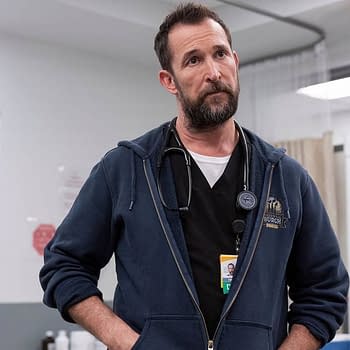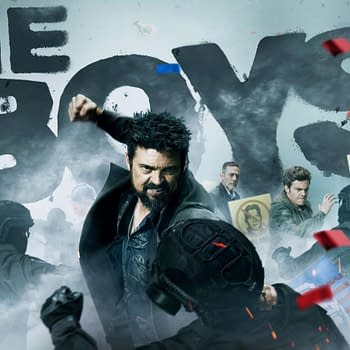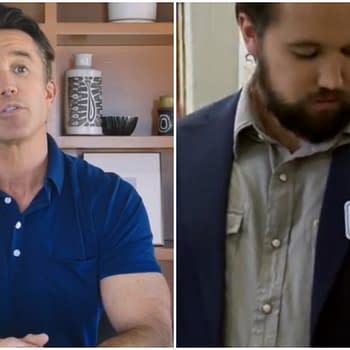Posted in: FX, Hulu, streaming, TV | Tagged: fx networks, hulu, justin marks, Rachel Kondo, shogun
Shōgun: FX Series Creators Discuss Adding More Cultural Authenticity
Shōgun showrunners Justin Marks & Rachel Kondo spoke with us about Hiroyuki Sanada and adding cultural authenticity to FX's series.
Article Summary
- Creators/EPs sought to add authenticity to FX's 'Shōgun' with a Japanese cast and cultural nuances.
- Hiroyuki Sanada enhances the series not just as lead actor, but also as a cultural producer.
- The adaptation moves beyond 'East Meets West' to explore themes relevant to today's audience.
- Historical accuracy prompted creative changes, like relocating the iconic bath scene.
Justin Marks and Rachel Kondo knew they had a tall task when they adapted the James Clavell novel Shōgun to modern audiences. The previous adaptation was the 1980 NBC miniseries from Eric Bercovici, who wrote and produced along with Clavell himself that starred Richard Chamberlain and Toshirô Mifune as Blackthorne and Toranaga, respectively. Now 44 years have passed since, and Marks and Kondo are tackling the novel again for a new generation with Hiroyuki Sanada and Cosmo Jarvis in the Toranaga and Blackthorne roles. The creators & executive producers spoke to Bleeding Cool about the differences and advantages they had in their FX and Hulu miniseries to the NBC version, how Sanada's involvement helped provide authenticity to the production, and cultural considerations.
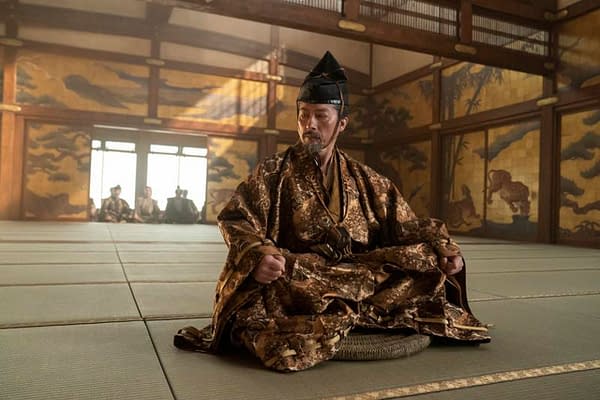
Showrunner Justin Marks & Rachel Kondo on Bringing Shōgun to a New Generation
Bleeding Cool: When you set to tackle 'Shōgun?' What advantages did you feel like working on the project in this era did you feel the original 1980s miniseries didn't have?
Marks: There are a couple of key advantages. It's a good question because it was a method of approach. One is cultural; we have a different standard to work with when it comes to telling a story out of a Hollywood lens, set in a country [of Japan] that is not ours. In a time that we don't belong to and that raised the bar when it came to what we felt would be asked of us, in terms of writers, who we bring into the fold, the crew we hire, our Japanese collaborators through Hiroyuki Sanada, one of our producers, and star to find this level of precision and authenticity. That would be one. The other is, frankly, an openness, not just from an audience, but from a network point of view when it comes to an ability to tell this story in Japanese, be able to subtitle it, and use language as a means of bringing our audience closer to the characters and not being afraid in the way that maybe it would have been, a few decades ago.
Kondo: One of the advantages we have is what some could consider a disadvantage in that we don't have the novelty that the 1980s miniseries or adaptation of the book had back then. I see it as an advantage because it pushed the envelope. It forced us to ask other questions. We've already answered these questions, so what now, why, and what are your questions going to be, and are they relevant? A lot of the characters who found themselves constrained, I don't know, by religion, past, gender, whatever it is, then you must find a creative way through that.
Marks: We didn't have the luxury of "East Meets West" anymore as its theme. We had to transcend that theme to get to something maybe more complex.
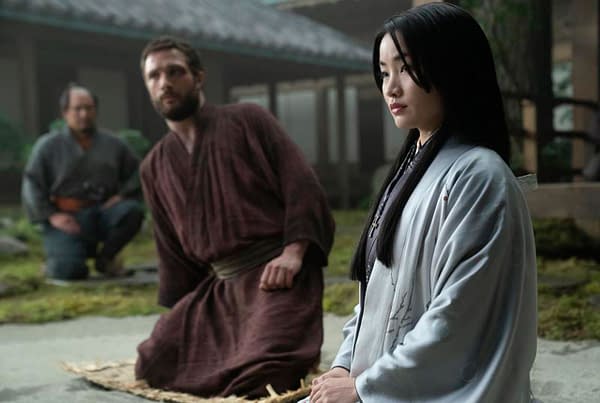
What were some of the goals that you had set when you were casting? Was Hiroyuki in right away, or was it something you had to pitch him?
Marks: It was a pitch. We had to pitch in with the scripts to get him to sign on board. Not just the scripts but also a conversation. Does he want to participate in this process as a producer, as a voice, in the room in terms of who we hire and why? We could not make the mistakes, maybe of the past, Hollywood renderings of this culture. That was a real dream for us. The rest of the cast were a variety of a wish list. It was for me, as a fan of Japanese cinema, they were just actors I was dying to work with. To get, for example, Tadanobu Asano playing [Kashigi] Yabaushige, our villain. To get to see him perform in Japanese, I don't think I can think of the movie out of the United States where he was playing in his language. Then you look at his Japanese films, and you see what a dynamic, incredible actor he is. It was so fun to have him there. It was that kind of thing. It was the freedom afforded to us to say that we're going to do this in Japanese, so you can go to a Japanese cast that largely, has never been brought to the United States before.
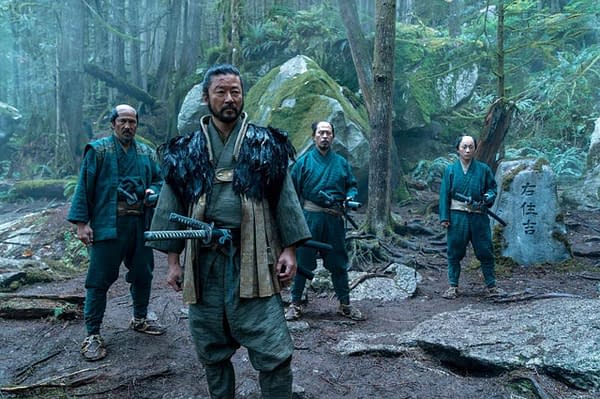
What were the difficulties that you had during production? Were there any sequences you had to scrap? Were there any cultural concerns maybe that age well from the novel that didn't make the final cut because of the way that would be received in the United States or Japan?
Marks: It's a great question.
Kondo: It's an important question too, and one we had to keep asking ourselves throughout the process. The interesting experience for us was that we didn't understand this at the outset, but we went into it, making our way as we went along. We did learn how to tell this story, and it had to teach us which mechanisms to use. There would be whole sequences or whole swaths of time, like the writer's room. We all put our hearts and souls into producing these ten scripts. Then there would be the next leg of the journey in which we would try to apply cultural nuance to it that we didn't have maybe six months earlier. As time went on, we kept building the machine to help get us closer and closer to authenticity.
Marks: As an example, I can think of a sequence where there's a famous bath scene from the book with John Blackthorne that was built by a value system that is now 40 years later. We recognize historically; it was not fully in lockstep with what the culture was in the Sengoku Jidai at that time when a woman's willingness to climb into a bather or, frankly, the existence of a food row in peasant houses in Anjiro. We had to find a spring, to shoot the scene and move it to that location, which gave us a whole difference of like, "Okay, so now how do these two characters find their way to this spring?" It gave a lot of new opportunities for comedy and humor. All these things came about because, working with our Japanese producers, we started to gain a different level of authenticity.
Shōgun, which also stars Anna Sawai, Hiroto Kanai, Takehiro Hira, and Moeka Hoshi premieres February 27th on FX and Hulu.









